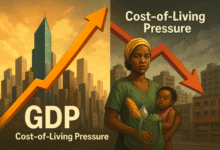CBN barred 12 DMBs for ‘frustrating’ small businesses
 The Central Bank of Nigeria (CBN) has barred at least 12 deposit money banks (DMB) from the SME window of the foreign exchange market for flouting regulations, as it relates to small businesses.
The Central Bank of Nigeria (CBN) has barred at least 12 deposit money banks (DMB) from the SME window of the foreign exchange market for flouting regulations, as it relates to small businesses.
A senior official of the CBN disclosed to TheCable that the financial regulator took the decision to bar the erring banks based on field reports, which revealed that only eight banks had sold forex to the SMEs.
The CBN spokesman, Isaac Okorafor confirmed the development, stating that the banks were barred for refusing to sell forex to the SME actors after accessing over $300 million offered to them via the SMEs wholesale forex window since its creation in April.
He said only Access Bank Plc, Diamond Bank Plc, Fidelity Bank, Heritage Bank, Jaiz Bank, Sterling Bank, Unity Bank and Zenith Bank, sold forex to SMEs.
He warned that the CBN would not sit back and allow any form of instability in the interbank forex market through the actions of institutions or individuals.
He therefore urged all stakeholders to play by the rules for the benefit of the entire country and its economy.
Meanwhile, the CBN continued its massive intervention in the foreign exchange segment of the financial market by injecting a total of $196.2 million into the various segments of the forex market on Tuesday.
According to Okorafor, the apex bank offered the sum of the $100 million to authorized dealers at Tuesday’s forex wholesale auction, and $52 million at the SME segment, while invisibles such travel allowances, medicals and tuition received $44.2 million.
Posted by Juliet Ekwebelam











